The first week of the semester kicked off with the ecology module at Mpala Research Centre (MRC) led by Dr Dino Martins, who is one of the world’s leading experts in East African ecology. The plants and animals found across the MRC are highly diverse and give students the opportunity to understand how topography, rainfall, soils, and vegetation interact to create the incredible variety of life seen across the Rift Valley today. MRC boasts incredible wildlife including herds of elephants and reticulated giraffes, many hippos, as well as the endangered Grevy’s zebra (more about the Grevy’s zebra coming soon!), the plain zebra, and a wide range of antelope.
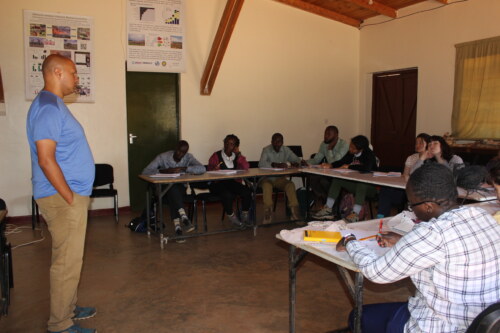
Dr. Martins kicks off the ecology module at MRC.
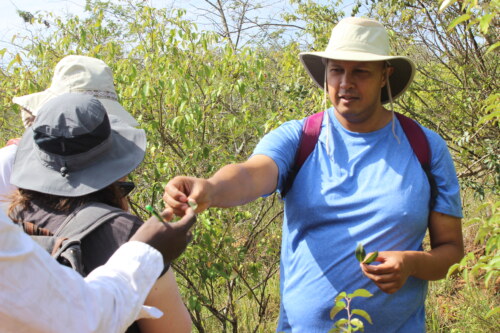
Dr. Martins introducing the students to some of the plants at the centre.
On Monday Dr. Dino Martins walked the students around the Mpala Research Centre to identify grasses, shrubs, and trees. In any ecosystem, different plants respond and adapt differently to various environmental stresses such as drought and the action of herbivores. Many of the plants and trees here have thorns or secrete toxins to protect themselves from herbivores. In the afternoon, the students hiked an outcrop called Mukenya, which gave a flavor of some of the hiking yet to come and also afforded incredible views for miles around and across the surrounding Mpala landscape. From above, the students were able to note changes in vegetation density and type, and also observe elephants and giraffes wandering through the savanna. Finally, we visited the camels’ boma, where these wonderful creatures are kept safe overnight from lion predation.
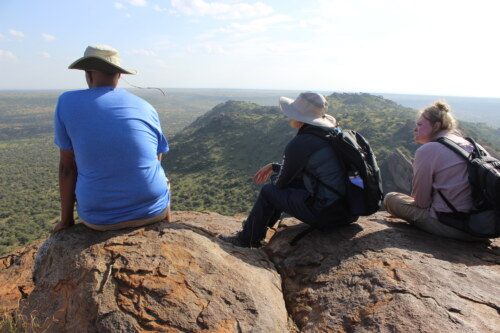
Dr. Martins and field school students; Deb and Maddie look out over the Mpala landscape.
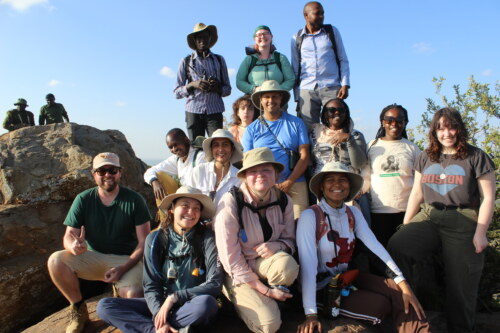
A group photo at Mukenya.
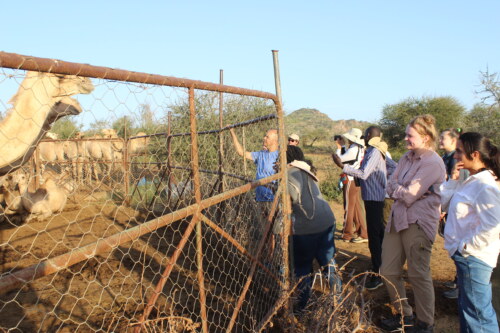
Students at the camels boma.
Mid-week, Dr. Martins, introduced the students to an interesting aspect of ecology called mutualism. Students went out in the field to collect data on ant-plant mutualism. Ants benefit from the Acacia drepanolobium plant by getting carbohydrates and shelter, and in turn, defend the tree from herbivores. Although not immediately obvious, once you have noticed the ant’s nests on the acacia, you see them almost everywhere! The students also had the privilege to visit a nearby farm and a local community to understand the different ways in which farmers have been adapting to environmental changes in the landscape.
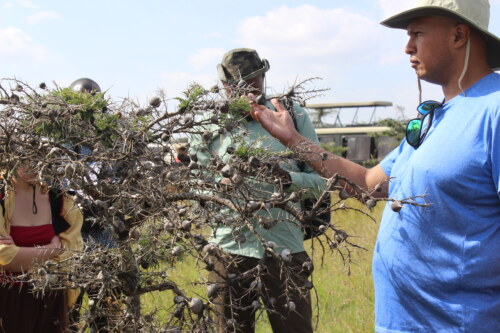
Dr. Martins explaining to the students about the ant-plant mutualism.
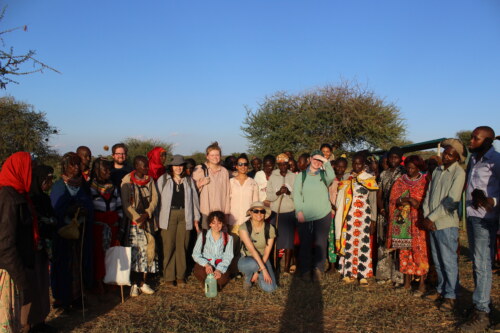
Students with the women group from Lekiji.
On Friday, the field school team woke up early and drove to Mount. Kenya – the second highest peak in Africa after Tanzania’s Mt. Kilimanjaro – and were led by Dr. Martins on a hike up the mountain. Despite what the students might tell you, we didn’t get close to the summit, but it was still pretty chilly! Dr Martins showed the students some of the endemic plant species on the mountain’s slopes. In the afternoon, the students visited the Mount Kenya Wildlife Conservancy in Nanyuki, where you were able to get up close to cheetah, lion, and even a 150-year-old giant tortoise called Speedy.
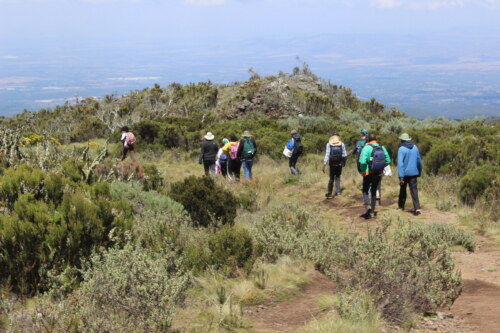
Students hiking Mt. Kenya with Dr. Martins.
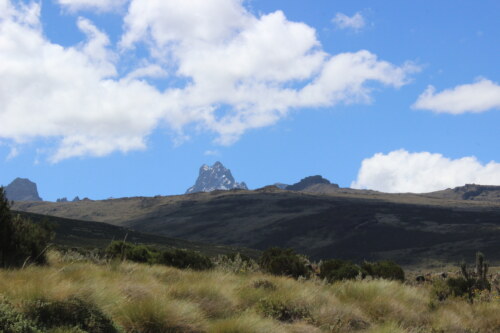
A clear view of one of the peaks on Mt.Kenya.
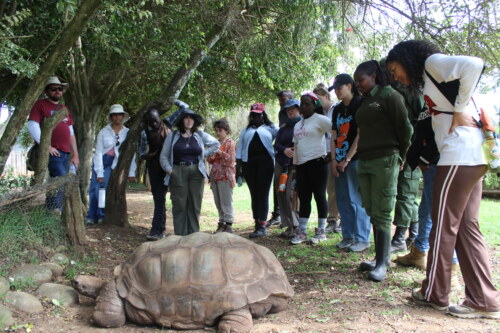
Here comes Speedy!





